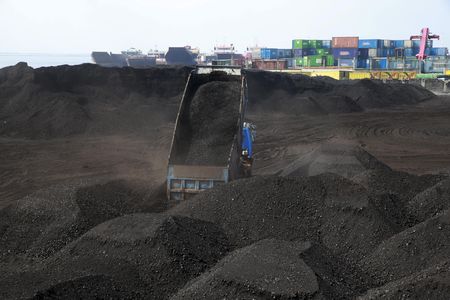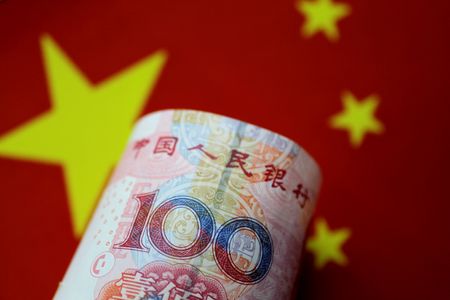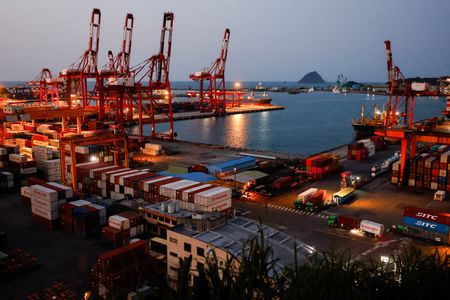By Sudarshan Varadhan and Emily Chow
SINGAPORE (Reuters) -The Philippines is on track for an annual decline in coal-fired electricity output for the first time in nearly two decades, an analysis of market and government data showed, driven by rising liquefied natural gas-fired power generation.
The Philippines has the most coal-dependent grid in Southeast Asia but its electricity tariffs, which are not subsidised, are the second highest in the region behind Singapore. The archipelago’s liberalised market enables power retailers to pivot to LNG, analysts say, unlike in Indonesia and Malaysia, where cheap coal keeps subsidies manageable.
Gas-fired generation surged more than 25% in June year-on-year and rose 5.2% to 10.36 terawatt hours (TWh) in the first half of this year, data from the Independent Electricity Market Operator of the Philippines (IEMOP) showed.
That helped push the share of gas-fired power output to 17.5% in the first half of 2025, up from a record low of 13.9% in 2023, which was due to depleting reserves at the key Malampaya field, according to government data dating back to 2003.
LNG is expected to meet a rising share of the Philippines’ projected 5% annual growth in power demand over the next decade as coal-fired power output is set to peak in 2030 due to a moratorium on new coal capacity construction, said James Ha, head of research for Asia-Pacific at Aurora Energy Research.
In 2020, the Philippines stopped accepting new proposals for coal-based power projects to encourage investment in other energy sources like natural gas and renewables.
Higher LNG imports will drive annual gas-fired output up by 65% by 2030 from 2024 levels, Aurora’s Ha said.
Philippine consortium LNGPH signed the country’s first long-term LNG deal in March with global trader Vitol, doubling down on improved prospects for the super-chilled fuel in the country of 114 million people.
Consultancy Energy Aspects expects the Philippines’ LNG import demand in 2025 to rise by more than 50% to 2.1 million metric tons from 2024 due to the addition of new gas-fired capacity, senior LNG analyst Kesher Sumeet said.
COAL’S RETREAT
Price-sensitive Asian nations with high reliance on coal have largely boosted renewable additions to slash emissions and address growing power demand instead of using LNG as a transition fuel.
However, the Philippines has instead bet on LNG, whose usage has started inching up after it began importing the fuel in mid-2023. The country registered a 40% increase in the generation capacity of its gas-fired power fleet in 2024 from end-2023 levels, IEMOP data showed.
Meanwhile, coal-fired power output fell 5.5% to 33.8 TWh during the period, IEMOP data showed, with generation falling for the fourth straight month in June and its share of the power mix dropping to 57.2% from 61.9% in 2024.
Falling coal-fired power demand led to the first decline in coal imports since the COVID-19 pandemic during the six months ended June, while LNG imports rose 51% in the same period, Kpler data showed.
Coal’s retreat – the first since 2008 – was also compounded by hydropower generation accounting for a higher share of Philippines’ electricity mix during the first half of the year.
Asian spot LNG prices have fallen about 13% this year on tepid demand, further boosting the competitiveness of the fuel against coal. IEMOP data also showed a wave of planned outages in early 2025 at coal-fired power plants, which helped to boost the share of gas.
“We think that the rising power demand in the Philippines will outpace renewables’ growth and that combined with the coal phase-out policy would sustain Philippines’ call on LNG in coming years,” Energy Aspects’ Sumeet said.
Electricity generated from renewable sources in the Philippines has been rising, but growth has fallen well short of its ambitious targets.
(Reporting by Sudarshan Varadhan and Emily Chow; Editing by Jamie Freed)











